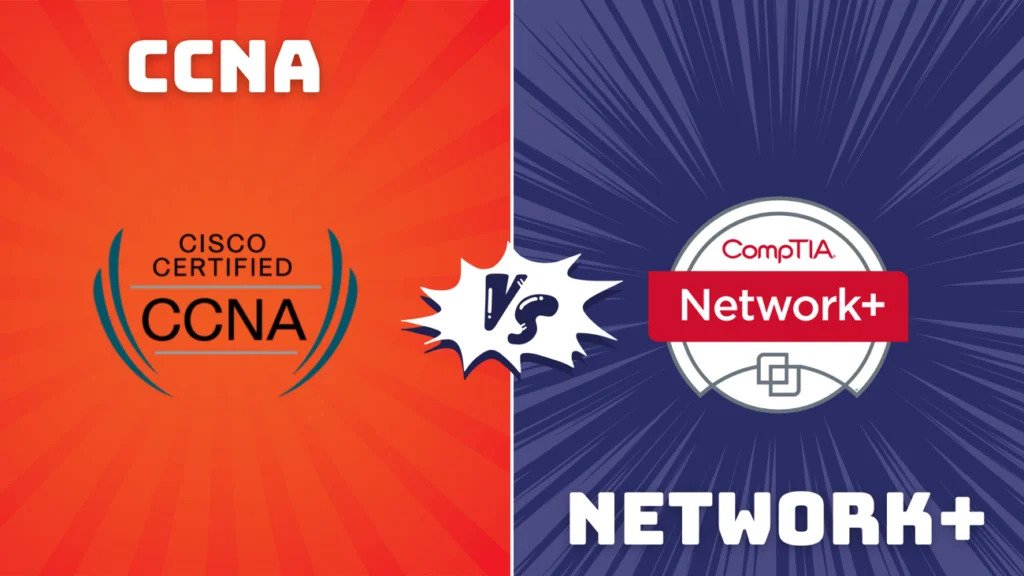Cisco wireless solutions offer reliable and secure wireless connectivity for businesses of various sizes. These solutions utilize advanced technology to meet the needs of modern mobile workforces. Cisco’s product range includes access points, controllers, and management software, designed to deliver seamless connectivity and high-performance wireless networking.
A key component of Cisco’s wireless offerings is the Aironet series of access points. These devices provide high-speed wireless connectivity and feature advanced technologies like beamforming, which enhances signal strength and coverage. Cisco also offers wireless LAN controllers for centralized management and control of wireless networks.
These controllers optimize network performance, facilitate seamless roaming, and implement advanced security measures. Cisco wireless solutions are engineered to provide businesses with robust, high-performance wireless networks capable of supporting a diverse range of applications and devices. These solutions are suitable for various use cases, including mobile device connectivity, IoT device integration, and support for mission-critical applications.
Cisco’s wireless technology is designed to meet the demands of today’s digital business landscape.
Key Takeaways
- Cisco Wireless Solutions provide reliable and secure wireless connectivity for businesses and organizations.
- Proper planning and design are essential for a successful Cisco Wireless Network deployment.
- Implementing Cisco Wireless Solutions involves installing and configuring access points, controllers, and other necessary hardware.
- Configuring and Troubleshooting Cisco Wireless Networks requires a deep understanding of the system and potential issues that may arise.
- Securing Cisco Wireless Networks is crucial to protect sensitive data and prevent unauthorized access.
Planning and Designing a Cisco Wireless Network
Conducting a Site Survey
One of the first steps in planning a Cisco wireless network is to conduct a site survey to assess the physical environment and identify potential sources of interference. This helps determine the optimal placement of access points, ensuring the network provides adequate coverage and performance.
Capacity and Scalability Requirements
In addition to conducting a site survey, it’s crucial to consider the capacity and scalability requirements of the network. This involves determining the number of users and devices that will connect to the network, as well as any future growth that may need to be accommodated. Cisco offers a range of access points and controllers designed to scale with the business’s needs, making it easy to expand the network as needed.
Security Requirements
Finally, when designing a Cisco wireless network, it’s essential to consider security requirements. Cisco offers a range of security features, including encryption, authentication, and intrusion prevention, designed to protect the network from unauthorized access and ensure data privacy. By carefully planning and designing a Cisco wireless network, businesses can ensure they have a reliable and secure wireless infrastructure that meets their needs.
Implementing Cisco Wireless Solutions

Implementing Cisco wireless solutions involves deploying access points, controllers, and management software to create a high-performance wireless network. One of the key components of implementing Cisco wireless solutions is deploying access points in strategic locations to provide optimal coverage and performance. Cisco offers a range of access points that are designed to meet the needs of different environments, including indoor and outdoor access points, as well as access points with advanced features such as beamforming and mesh networking.
In addition to deploying access points, implementing Cisco wireless solutions also involves deploying wireless LAN controllers to provide centralized management and control of the network. These controllers help to optimize network performance, ensure seamless roaming, and provide advanced security features. Cisco also offers management software that provides visibility into the wireless network, making it easy to monitor performance, troubleshoot issues, and make configuration changes as needed.
Overall, implementing Cisco wireless solutions involves deploying a range of hardware and software components to create a reliable and high-performance wireless network. By carefully planning the deployment and following best practices for installation and configuration, businesses can ensure that they have a wireless network that meets their needs.
Configuring and Troubleshooting Cisco Wireless Networks
Configuring and troubleshooting Cisco wireless networks involves setting up access points, controllers, and management software to ensure that the network provides reliable and secure connectivity. One of the key aspects of configuring a Cisco wireless network is setting up access points with the appropriate settings to provide optimal coverage and performance. This includes configuring parameters such as channel selection, transmit power, and antenna orientation to minimize interference and maximize signal strength.
In addition to configuring access points, it’s important to configure wireless LAN controllers to provide centralized management and control of the network. This includes setting up policies for user authentication, quality of service, and security settings to ensure that the network meets the needs of the business while providing a secure and reliable connection. When troubleshooting Cisco wireless networks, it’s important to have visibility into the network to identify issues and make configuration changes as needed.
Cisco offers management software that provides real-time monitoring of the wireless network, making it easy to identify performance issues, troubleshoot connectivity problems, and make configuration changes as needed. Overall, configuring and troubleshooting Cisco wireless networks involves careful planning and attention to detail to ensure that the network provides reliable and secure connectivity for users and devices.
Securing Cisco Wireless Networks
Securing Cisco wireless networks is essential to protect against unauthorized access and ensure data privacy. Cisco offers a range of security features that are designed to protect the wireless network from potential threats and vulnerabilities. One of the key aspects of securing a Cisco wireless network is implementing strong encryption to protect data as it is transmitted over the air.
This includes using protocols such as WPA3 and AES encryption to ensure that data is secure from eavesdropping and tampering. In addition to encryption, it’s important to implement strong authentication mechanisms to control access to the wireless network. This includes using protocols such as 802.1X authentication to verify the identity of users and devices before allowing them to connect to the network.
By implementing strong authentication mechanisms, businesses can ensure that only authorized users and devices are able to access the network. Finally, securing a Cisco wireless network involves implementing intrusion prevention measures to protect against potential attacks and unauthorized access attempts. This includes using features such as rogue access point detection and containment to identify unauthorized devices on the network and prevent them from causing interference or accessing sensitive data.
Overall, securing a Cisco wireless network involves implementing a range of security features to protect against potential threats and vulnerabilities. By carefully planning and implementing security measures, businesses can ensure that their wireless network provides reliable and secure connectivity for users and devices.
Managing and Monitoring Cisco Wireless Networks

Monitoring Performance Metrics
A crucial aspect of managing a Cisco wireless network is monitoring key performance metrics, such as signal strength, throughput, and client connectivity. This allows network administrators to quickly identify potential issues and take corrective action to prevent them from affecting users.
Optimizing Network Performance
In addition to monitoring performance metrics, managing a Cisco wireless network involves making configuration adjustments as needed to optimize network performance. This includes fine-tuning settings such as channel selection, transmit power, and antenna orientation to minimize interference and maximize signal strength. By making proactive configuration changes, businesses can ensure that their wireless network provides reliable connectivity for users and devices.
Implementing Network Policies
Finally, managing a Cisco wireless network involves implementing policies for user authentication, quality of service, and security settings to ensure that the network meets the needs of the business while providing a secure and reliable connection. By carefully managing the configuration of the network, businesses can ensure that they have a wireless infrastructure that meets their needs.
Best Practices for Deploying Cisco Wireless Solutions
When deploying Cisco wireless solutions, there are several best practices that businesses should follow to ensure that they have a reliable and high-performance wireless network. One best practice is conducting a site survey before deploying access points to assess the physical environment and identify potential sources of interference. This will help to determine the optimal placement of access points and ensure that the network provides adequate coverage and performance.
Another best practice for deploying Cisco wireless solutions is carefully planning for capacity and scalability requirements. This includes determining the number of users and devices that will be connecting to the network, as well as any future growth that may need to be accommodated. By carefully planning for capacity and scalability requirements, businesses can ensure that their wireless network can support their needs now and in the future.
Finally, when deploying Cisco wireless solutions, it’s important to follow best practices for configuring security settings to protect against potential threats and vulnerabilities. This includes implementing strong encryption, authentication mechanisms, and intrusion prevention measures to ensure that the network provides secure connectivity for users and devices. Overall, by following best practices for deploying Cisco wireless solutions, businesses can ensure that they have a reliable and high-performance wireless network that meets their needs for connectivity while providing strong security measures.
If you are interested in learning more about Cisco networking solutions, you may also want to check out this article on First Hop Redundancy Protocol. This comprehensive guide provides valuable insights into the importance of redundancy in network infrastructure and how to implement it effectively. It is a great resource for anyone looking to enhance their understanding of network reliability and resilience.
FAQs
What is Cisco Wireless Solutions?
Cisco Wireless Solutions refer to a range of products and technologies offered by Cisco Systems for wireless networking. These solutions include access points, controllers, and management software for creating and managing wireless networks.
What are the benefits of deploying Cisco Wireless Solutions?
Deploying Cisco Wireless Solutions offers benefits such as improved mobility, flexibility, and scalability in network connectivity. It also provides enhanced security features and better management of wireless networks.
What are the key components of Cisco Wireless Solutions?
The key components of Cisco Wireless Solutions include Cisco Aironet access points, Cisco Wireless LAN controllers, Cisco Mobility Express, and Cisco DNA Center for wireless network management.
How can Cisco Wireless Solutions be deployed?
Cisco Wireless Solutions can be deployed through a systematic process that involves planning, designing, implementing, and optimizing the wireless network infrastructure. This includes site surveys, RF planning, and configuration of access points and controllers.
What are some best practices for deploying Cisco Wireless Solutions?
Best practices for deploying Cisco Wireless Solutions include conducting a thorough site survey, ensuring proper RF coverage, implementing security measures such as WPA2 encryption, and regularly monitoring and optimizing the wireless network performance.













